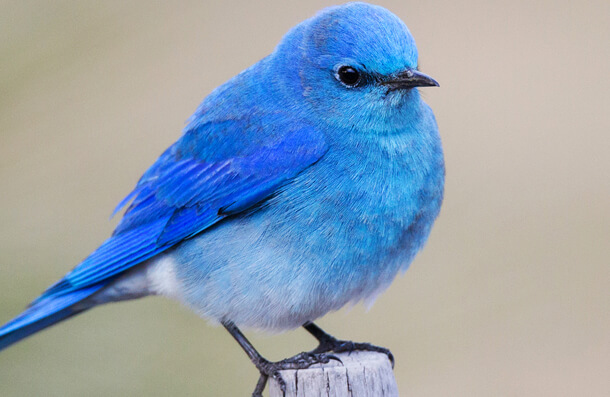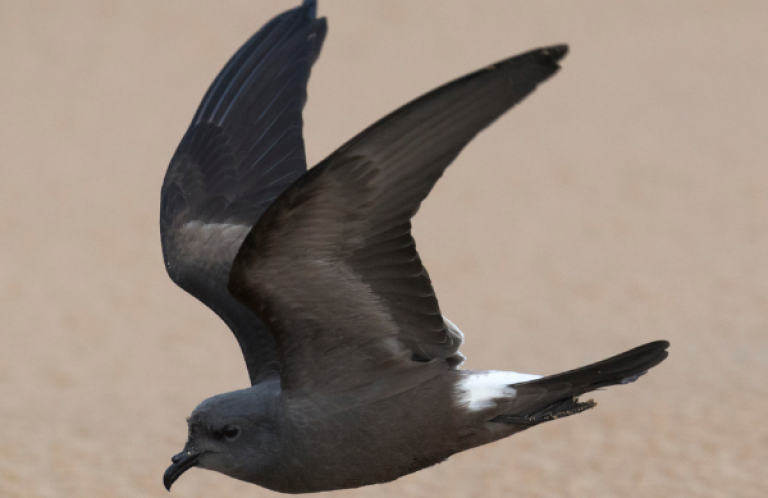Agency Targets Open Pipes and Mining Claim Markers to Reduce Bird Deaths

Mountain Bluebird, one of the bird species most often trapped by open pipes such as mining-claim markers. Pipe-pulling efforts have documented as many as 30 bird mortalities in a single pipe. Photo by Double Brow Imagery/Shutterstock
Contact: Steve Holmer, American Bird Conservancy, 202-888-7490
(Washington, D.C., Feb. 25, 2016) The Bureau of Land Management (BLM) today took action to reduce a serious threat to birds, issuing a memorandum to its field offices across the nation with guidance on how to eliminate the threat of open pipes on public lands.
Open pipes, such as uncapped PVC pipes used to mark mining claims, are death traps for hundreds of thousands of birds and other wildlife each year. Animals become trapped inside the pipes and, unable to escape, starve or die of dehydration. More than 3 million mining claims use these pipes as boundary markers.
“This is a small change that will make a big difference,” said BLM Director Neil Kornze. “Too often birds, bats, lizards, snakes, and small mammals find themselves unable to escape from pipes and vents.”
The memorandum calls for BLM staff to identify all vertical pipes on BLM-managed lands and to cap, close, remove, or screen them to prevent wildlife from becoming trapped. In addition, all vertical pipes on future facilities must have permanent caps or screens to prevent harm to wildlife. Mine-claim holders are also being encouraged to voluntarily remove PVC pipes used as mine markers and to replace them with wildlife-safe markers.
“This is a positive step in the right direction,” said Steve Holmer, Senior Policy Advisor for American Bird Conservancy, which has long advocated for eliminating this threat to birds on public lands. “The threat of open pipes can be easily prevented, and today's action moves us closer to solving this problem.”
In June, more than 100 groups led by American Bird Conservancy sent a joint letter to the BLM and the USDA Forest Service, asking the two agencies to accelerate efforts to address this longstanding threat to birds.
“Much work remains to be done to remove existing hazards, and long-term policies and procedures still need to be established to prevent this form of bird mortality from continuing to occur on public lands in the future,” the letter says. The groups specifically asked BLM and the Forest Service to take three key actions:
- Issue national policy directives to remove or modify existing pipes, and to delineate standards to prevent use of open pipes in the future.
- Initiate a federal rulemaking to require that mining-claim holders replace pipes that can cause mortality and to use wildlife-safe markers on all current and future claims.
- Dedicate sufficient resources annually to educate mine-claim holders on this issue; to coordinate and carry out partnership efforts to remove pipes; and to carry out necessary infrastructure improvements within the public lands and national forest systems.
“Today's memorandum makes significant progress toward establishing a national policy—the first item on the list—and outreach to mine-claim holders is also underway,” said Holmer. “We would now like to see the Forest Service and the U.S. Fish and Wildlife Service take similar action to make sure this problem does not continue to re-occur in national forests and national wildlife refuges.”
According to the BLM publication Public Land Statistics, in 2014, 3.5 million mining claims were on record on BLM-managed lands in 11 contiguous western states and Alaska. Nevada had the most, with 1.1 million claims, followed by Utah, with 412,000 claims; Wyoming (which includes minimal numbers from Nebraska) with 314,000; California, with 311,000; and Colorado, with 285,000.
An examination of 854 pipes in the state of Nevada revealed 879 dead birds—an average of more than one bird death per pipe—as well as 113 reptiles and mammals. Of the 43 species of birds recovered from the markers by the Nevada Department of Wildlife, most were cavity nesters. The Ash-throated Flycatcher and the Mountain Bluebird were the most frequent victims, but other species commonly trapped included woodpeckers, sparrows, shrikes, kestrels, and owls.
This threat to birds has been documented from Oregon to New Mexico. In November 2011, BLM specialists in Oregon documented alarming rates of bird mortality at claims in the Burns area. One researcher stated in his written report that the toll to birds “… could be enormous … a single uncapped, vertical PVC cylinder can potentially entrap and kill dozens of native birds from multiple species.” Pipe-pulling efforts have so far documented as many as 30 bird mortalities in a single pipe.
In their June letter, the concerned groups recognized that some efforts have already been undertaken to mitigate the threat, such as BLM's creation of a flyer endorsed by partners that include American Bird Conservancy and the National Mining Association. This flyer was mailed to mine-claim holders, alerting them to the problem and urging them to replace or remediate hazardous markers. Meanwhile, Forest Service staff are covering open vent pipes on outhouses known to trap birds.
# # #
American Bird Conservancy is the Western Hemisphere's bird conservation specialist—the only organization with a single and steadfast commitment to achieving conservation results for native birds and their habitats throughout the Americas. With a focus on efficiency and working in partnership, we take on the toughest problems facing birds today, innovating and building on sound science to halt extinctions, protect habitats, eliminate threats, and build capacity for bird conservation.


















































